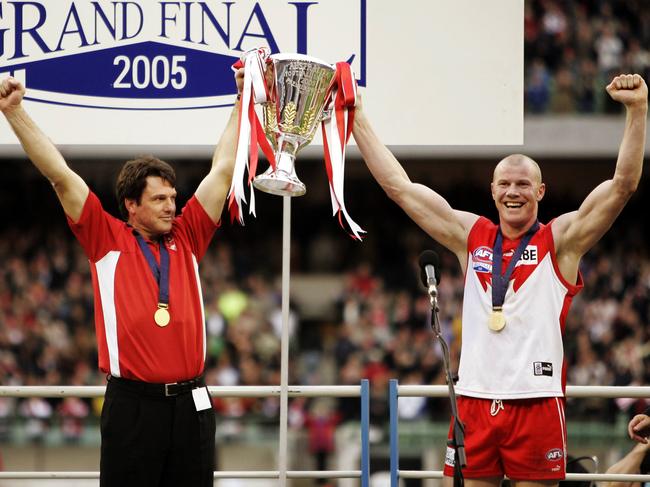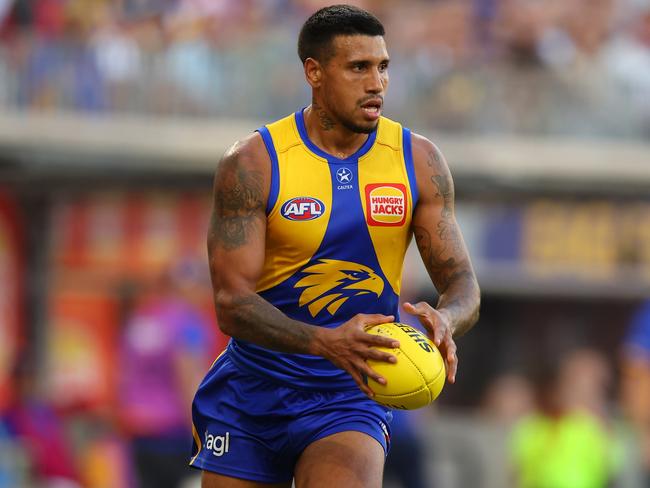Sydney and West Coast contrasting rebuilds broken down
Both Sydney and West Coast have been big players this century in terms of success and finals appearances. Yet the two sides couldn’t be in more contrasting positions heading into their Gather Round clash.
AFL
Don't miss out on the headlines from AFL. Followed categories will be added to My News.
For much of this century, the Sydney Swans and West Coast Eagles have been pillars of success in the AFL.
In 2005 and 2006, the pair played two of the great grand finals in Aussie rules history, each coming away with a premiership. Both sides then added to their tallies throughout the 2010s and appeared in more grand finals.
The teams represented incredible longevity in a competition where equalisation is designed to keep sides as level as possible.
Yet only a few years on, the Swans and Eagles couldn’t be in more contrasting positions.

Sydney currently has one of the best young lists in the competition. They’ve built on their foundation from a shock 2022 grand final appearance and are right in the mix as one of the flag favourites this season.
On the other side of the country, West Coast is languishing at the bottom of the ladder after winning just five of their past 52 games. They are staring at a second consecutive wooden spoon and the conversation has already begun as to whether compensation is needed to help lift them off the canvas.
With rebuilds an inherent part of remaining successful in the AFL, the past decade is a perfect example of how vital it is to plan ahead.
BLOODING THE BLOODS
The second half of the 2010s became a pivotal period for both the Swans and Eagles.
John Longmire’s side was tailing towards the end of a golden generation of players and starting to consider life without the likes of Adam Goodes, Jude Bolton, Jarrad McVeigh, Ryan O’Keefe and Kieren Jack.
It was a similar story for West Coast who were moving on from players such as Dean Cox, Darren Glass, Andrew Embley and Daniel Kerr who all retired between 2013 and 2014.

Neither team experienced an immediate drop-off. The Swans made the 2016 grand final, and were arguably strong favourites against the Bulldogs, while the Eagles came away with the flag in 2018 over Collingwood.
But Sydney’s ability to balance its regeneration over that period highlights West Coast’s current struggles.
Since the start of 2015, the Swans (45) and Eagles (46) have essentially matched the AFL average (44) for the number of debutants. Of those players, it’s clear the Bloods have done a better job of finding long-term stars.
Sydney debutants have on average played 19 more games for the club than their West Coast counterparts.
The Swans have also turned eight players from that group into 100+ gamers and 19 have played 50 or more matches. The Eagles only have three 100 gamers and 11 50+ gamers over the same period.
The 2020 season was Sydney’s ‘lowest’ point when it came to youth with an average age of 24.4 combined with an average of 76.1 games of AFL experience. But the commitment to stick with those young players immediately paid dividends as Sydney’s experience ballooned back up to 95.6 games the following season despite having a similar age profile.
Across 2019 and 2020, the Swans worst on-field performances still saw them win 13 matches across two seasons. The Eagles have only won five matches since the beginning of 2022.
“I feel we’ve got the essence of a good young group,” Longmire told this masthead in 2020.
“I’d like to be able to get to that point where these young guys play a bit of footy together with the likes of Lance Franklin, Dane Rampe and Isaac Heeney.
“Not just one or two games here and there, but enough so that the younger blokes can feed off the experienced players and learn from them.”
The starting point for the Eagles’ rebuild continues to be pushed down the track with the club not any closer to turning the corner. For the past five years, their average age and experience has slowly declined without any sense of urgency in revitalising their list. Their average age has gone from 26.2 in 2019 to 25.2 this season. In that same period, the average experience has dropped from 120 games to 90.5.
Bringing in young talent seems to be the heart of the issue, and it also explains why Harley Reid has been fawned over since arriving in Perth. The Swans have prioritised hanging onto high-value first-round draft picks with 10 players coming into the club since 2015.
The Eagles on the other hand have only had seven, and have often viewed those picks as bargaining tools. The deal to bring Tim Kelly to the club, for example, saw them relinquish their first-round pick for both 2019 and 2020.
Sydney has a slight advantage when it comes to the draft thanks to their Academy. Several of those first-round draft picks have been players such as Callum Mills, Nick Blakey and Braeden Campbell whom they have been able to monitor over the best part of a decade.

But it’s telling that they have also snapped up exciting Western Australian talent such as Chad Warner, Logan McDonald and Angus Sheldrick.
Reuben Ginbey and Elijah Hewett are the only two local products the Eagles have taken in the first round of the draft since 2015.
A period of change is on the horizon for West Coast. The arrival of Don Pyke from Sydney as CEO underlines that they want a new direction and it has coincided with 18 list changes over the past two years.
But the calls for West Coast to be given a priority draft pick are a step too far when it’s clear that teams in similar positions have been able to deal with the natural challenges that arise as an AFL club.
Originally published as Sydney and West Coast contrasting rebuilds broken down



